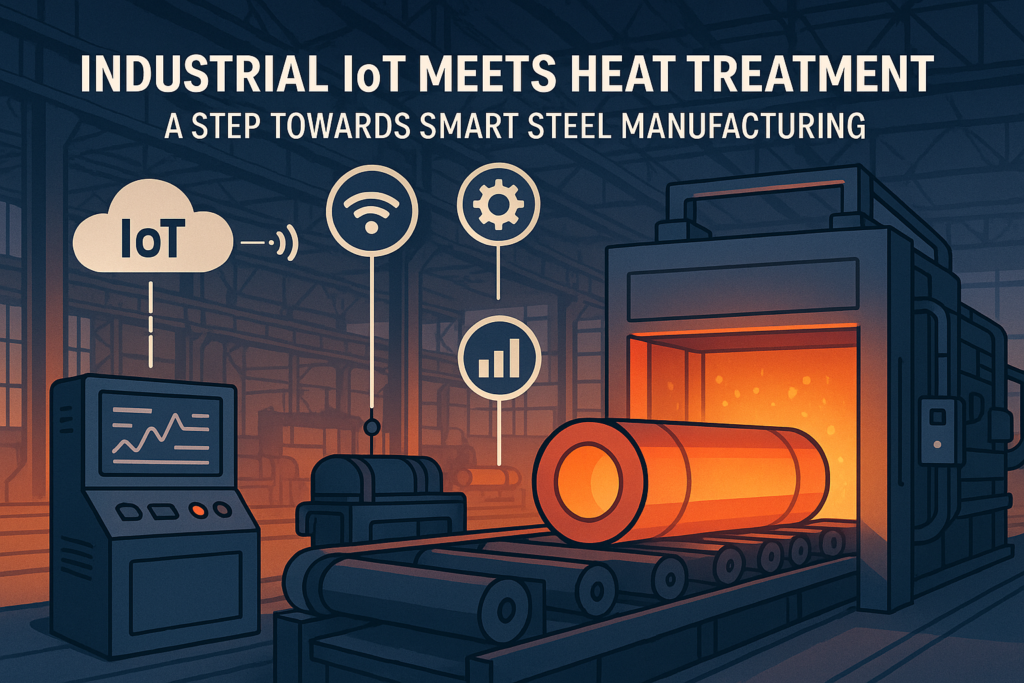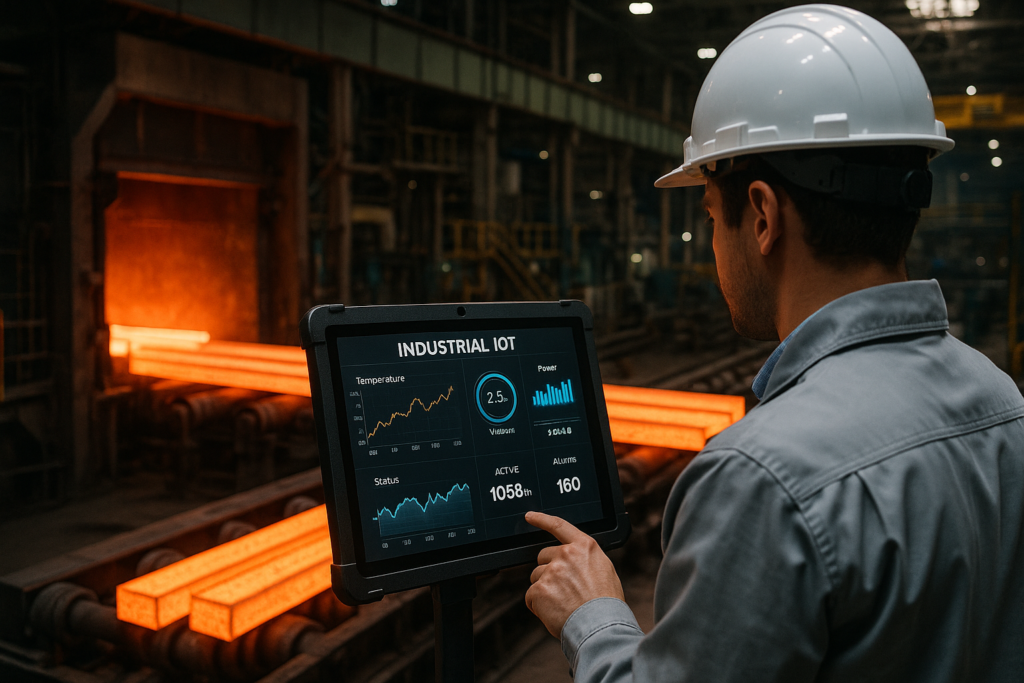In the high-stakes world of steel manufacturing, precision and consistency are non-negotiable. Among the most critical processes in the industry is heat treatment—a complex, high-temperature dance that determines the strength, ductility, and performance of steel. But what happens when this age-old process meets the cutting-edge technology of the Industrial Internet of Things (IIoT)?
Welcome to the era of Smart Steel Manufacturing, where IIoT is redefining heat treatment with intelligence, connectivity, and control like never before.

Why Heat Treatment Needs a Smart Makeover
Traditionally, heat treatment processes have relied heavily on manual oversight, legacy equipment, and batch data logging. While these methods can get the job done, they’re prone to inefficiencies, data silos, and inconsistencies. A single undetected temperature deviation or gas imbalance can result in product rejections, safety concerns, or customer dissatisfaction.
With increasing demand for high-performance steel in industries like automotive, aerospace, and construction, manufacturers are under pressure to deliver higher quality at lower costs—without compromising on speed or traceability.
That’s where IIoT steps in.

IIoT: The Digital Backbone of Modern Heat Treatment
At its core, Industrial IoT refers to the network of interconnected sensors, devices, and machines that communicate data in real-time across the production floor. Applied to heat treatment, IIoT enables:
🔍 Real-Time Monitoring
Sensors embedded in furnaces and chambers continuously track critical parameters like temperature, pressure, gas composition, and cycle duration. Operators get instant alerts if any reading drifts outside acceptable limits, allowing for swift corrective actions.
📊 Predictive Maintenance
By analyzing historical equipment performance data, IIoT systems can predict when components like burners or fans are likely to fail—reducing unplanned downtimes and costly shutdowns.
🔗 Seamless Data Integration
IIoT platforms integrate with MES (Manufacturing Execution Systems), SCADA, and ERP software, enabling end-to-end traceability and quality control. Every heat-treated batch is logged with digital fingerprints for compliance and audits.
🤖 Process Optimization via AI
When combined with machine learning, IIoT data can reveal patterns that even seasoned operators might miss—unlocking opportunities to optimize energy usage, shorten cycle times, and improve metallurgical outcomes.
Real-World Example: Smart Heat Treatment in Action
Imagine a steel plant where every furnace is equipped with smart thermocouples and gas sensors. These sensors feed data into a centralized cloud platform that uses AI to detect anomalies, suggest process tweaks, and schedule maintenance. Operators receive visual dashboards on tablets, and quality teams can trace every steel part’s treatment history with a few clicks.
The result? Higher yield, better quality, lower energy costs, and faster decision-making—all powered by the synergy of IIoT and steelmaking science.
Challenges on the Path to Smart Manufacturing
Of course, adopting IIoT in heat treatment isn’t without hurdles. Challenges include:
- Legacy equipment integration
- Cybersecurity concerns
- Initial infrastructure investment
- Training and change management
But with the right roadmap and partners, these barriers are surmountable—and the long-term ROI is compelling.
Looking Ahead: The Future is Smart
As the global push toward Industry 4.0 gains momentum, IIoT will become the norm rather than the exception in steel manufacturing. From autonomous heat treatment lines to AI-driven quality control, the transformation is just beginning.
By marrying metallurgical tradition with digital innovation, IIoT isn’t just improving heat treatment—it’s reshaping the steel industry for a smarter, stronger tomorrow.






Leave a Reply